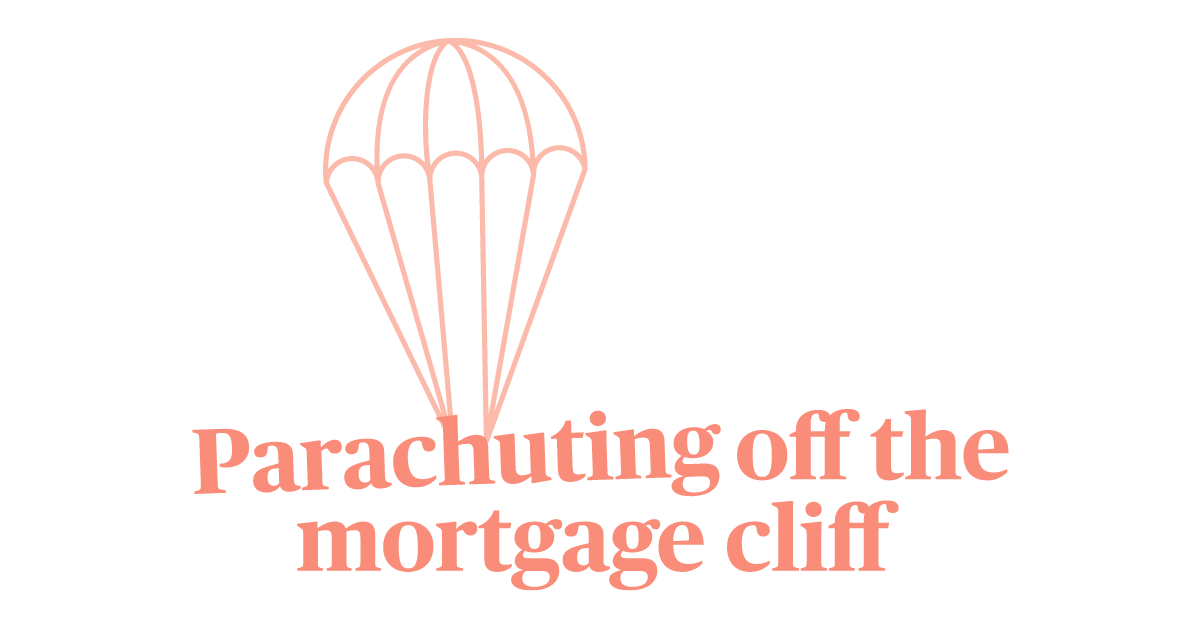
6 minute read
Parachuting off the mortgage cliff
With more than 800,000 Australians about to come off low, fixed-rate loans, one couple share their story of navigating a soft landing from what looked like the brink of disaster.
Before Christmas, Kylie and her husband Mitchell were at a financial tipping point. They were about to fall off a mortgage cliff that would catapult their monthly home loan repayments up by $1800 a month to nearly $5000.
They simply couldn’t pay. “I didn’t know how we were going to make ends meet. Our whole lives were about to change,” Kylie says of the enormous stress the couple were under as they neared the end of a low-rate fixed-term mortgage. “We thought we’d have to take our kids out of private school, away from all their friends.”
Back in March 2021, the couple had locked their $670,000 home loan in at 1.97 per cent, and as the two-year expiry date loomed it looked set to revert to more than three times that rate.
To Kylie, it seemed bewildering that they had ended up in this position. They’d always been so sensible, she thought. Through their 20s, they lived with parents to scrape together enough to build a house on a block of land they bought outright with their savings.
In 2015, a year after they had their first child, they used significant equity in that home to buy a modest investment property. When they had their second child, they did it again.
“The idea was to have these investment properties for our children. That was going to be a gift to them later in life. Their inheritance,” Kylie says.
They thought they were following sound advice to build equity and invest.
“Our old bank had said the best way to purchase the properties was to pull equity out of our home which meant that our mortgage increased pretty significantly, which I wasn’t really prepared for. I just couldn’t get my head around that our mortgage had essentially doubled from $320,000 to $670,000.
“I would call and say have we got this set-up right? And they would say ‘yes’.”
Stable, low interest rates meant that despite their misgivings, they were still in a comfortable position and in 2021, Kylie fixed their home loan as rates dipped to record lows.
“We weren’t in any financial stress, it just seemed a good opportunity to save some money. When rates started to creep up, we thought, ‘oh, lucky’.”
That shifted to ‘oh, dear!’ when rates continued to climb sharply.
“These rises weren’t something we had ever witnessed. In the time that we’ve been homeowners, interest rates had always been stable,” she says.
Now they were moving at record pace, pushing thousands into mortgage stress. Kylie and Mitchell thought they would need to pull their children out of private school or sell an investment property to meet repayments when their fixed term ended. Both options felt like selling their children’s futures.
But in late November, a chance encounter saw the couple referred to a mortgage broker, and within months she had overhauled their finances and pulled them back from the edge of a financial cliff.
“It’s been literally life-changing,” Kylie says.
Their broker explained the couple could drastically reduce their monthly outgoings and give themselves financial breathing space by moving most of their debt from their home loan to their investment loans and switching these from principal-and-interest to interest-only to ride out the higher rates cycle. This also gives them the ability to concentrate on paying down their owner-occupied debt.
“We had things back-to-front,” Kylie says of their previous loan arrangements. “I felt so stupid, but I also felt really let down by our previous lender. It taught us a lot about not just going into things blindly. Our poor broker – I asked her a lot of questions because I needed to understand everything this time.”
The couple’s new loan contracts changed hands in late February, a week before their large home loan was about to revert to a crushingly high rate.
Under their previous structure, the couple had a $670,000 home loan and two $200,000 investment loans, paying principal and interest on all. Under the new arrangement, they dropped their home loan to $370,000 and used significant equity in the investment properties to bump the loans to $350,000 each, and flipped them to interest only.
While this means they are not paying down debt on the investment properties at present, it has allowed them to hold on to both units, with rental income covering interest payments.
And with their home loan almost halved, the couple’s monthly repayments have actually dropped from $3000 to $2400, despite moving from a fixed rate of 1.97 per cent to a variable rate of 4.94 per cent. It’s delivered them room to manoeuvre while inflation and rates are high.
And the kicker? The new loan deal came with a cashback offer of $5000.
“Never in our wildest dreams did we think we were going to walk out saving money. We thought maybe our broker could just make the hit a little bit easier to take. But it’s just changed our whole financial position completely,” Kylie says.
While talking about personal finances used to be a bit of a taboo topic, Kylie wants to share her story in the hope it will prompt others to act early to avoid high revert rates.
“We’re in an environment now where it’s just a normal conversation to talk about your finances because people are hurting.”
Are you worried about rising interest rates or the end of a fixed term? Don’t put it off. Call me to book an appointment to review your finance. You might be surprised what options are out there.
Case study
Borrowers:
Kylie and Mitchell, both 38. He is a plumber and she works part-time in the insurance industry. They have two children aged seven and nine.

Loans:
The couple have mortgages on their family home and two investment properties.
The problem:
A two-year, fixed-rate mortgage on the family home was due to expire in March 2023, reverting from 1.97 per cent to around 6 per cent and sending monthly repayments on the $670,000 loan from close to $3000 to nearly $5000. The couple’s two investment properties were positively geared, with rent covering principal and interest repayments on two $200,000 loans.
The solution:
Their broker was able to create financial breathing space by refinancing and restructuring the loans to shift debt from the family home to the investment properties and flipping these to interest only, slashing their monthly outgoings.
The result:
Residential mortgage repayments fell to $2400 a month by cutting the loan to $370,000. The two investment loans were bumped up to $350,000 each, but flipped from principal-and-interest to interest-only, meaning rent would still cover repayments.
Bonus:
The couple secured a $5000 cashback on refinancing, while also consolidating creditcard debt. They saved on fees (and confusion) by reducing multiple offset accounts to one.



